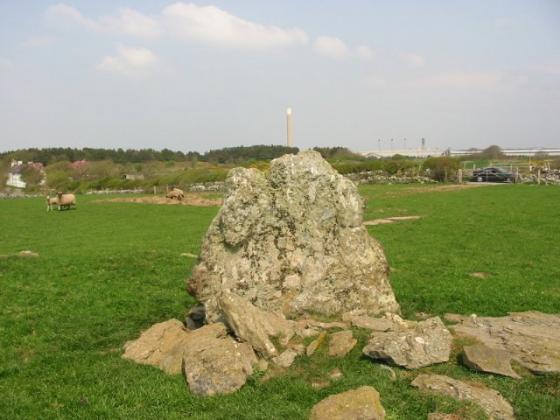I’ve passed this site by almost a dozen times, it’s collapsed and ruined and the current occupiers of this once sacred land demand that we ask to see it.
So I will reiterate the great Stubobs words “Get yourself over the gate”, and like he I went dead early, earlier still. I thought for a minute of knocking on the door the way that postmen do, but reckoned this wasn’t really what they had in mind, I’ve seen too many just got up grumpy faces, just doing my job.
So I parked some way away and walked back up the road and tip toed up the track to the farm buildings. No signs of life (well it is Wales) alerted me to farmers presence so I quietly climbed over the gate, if you go over by the hinges it makes less noise. Then a bee line to the stones, if all bees are a bit drunk. Stubobs analysis of the chamber is spot on, they are indeed a funny old jumble of stones, I think only the capstone is readily identifiable. I cant even tell if all the stones here are from the chamber, one big stone is earthfast outcrop, are they even in the same place, I doubted it.
Closer to the stones than the farm is the terminus of wires and pylons, it is without doubt a monstrosity, I can almost feel the mind control waves bashing around in my head, lucky for me i’m immune, probably the aneurysms.
Five minutes and I’m done, I think I got away with it.

















































